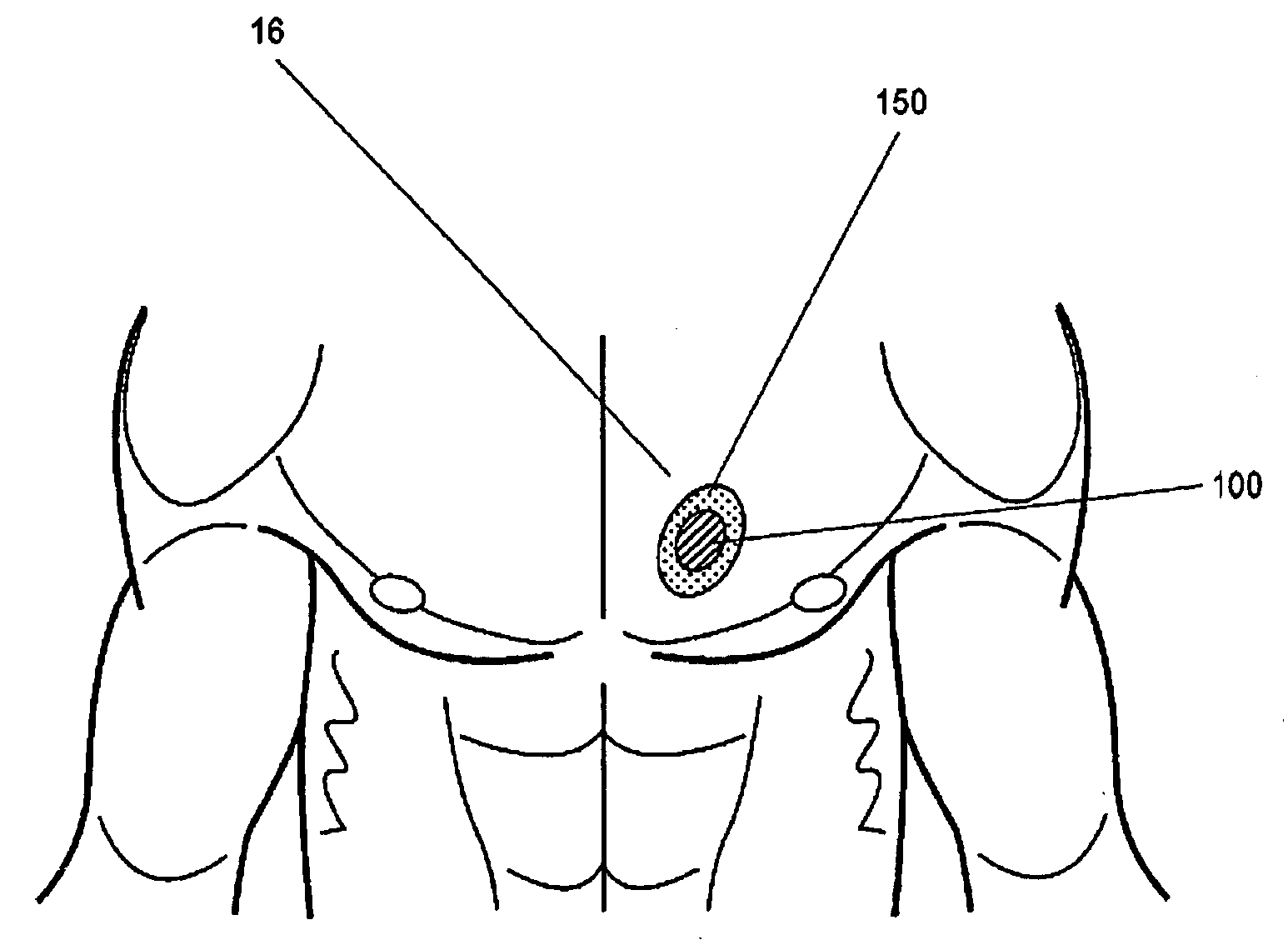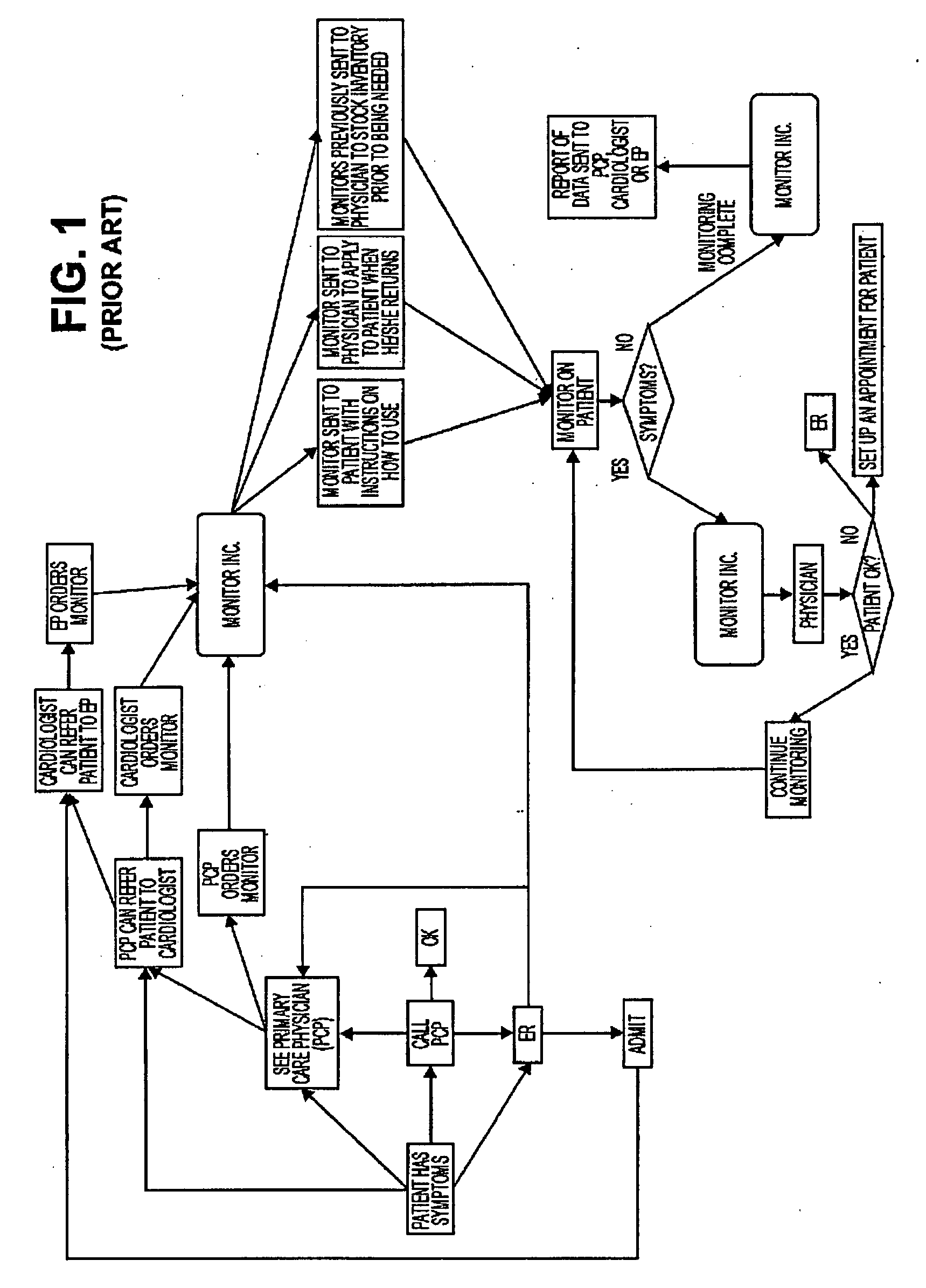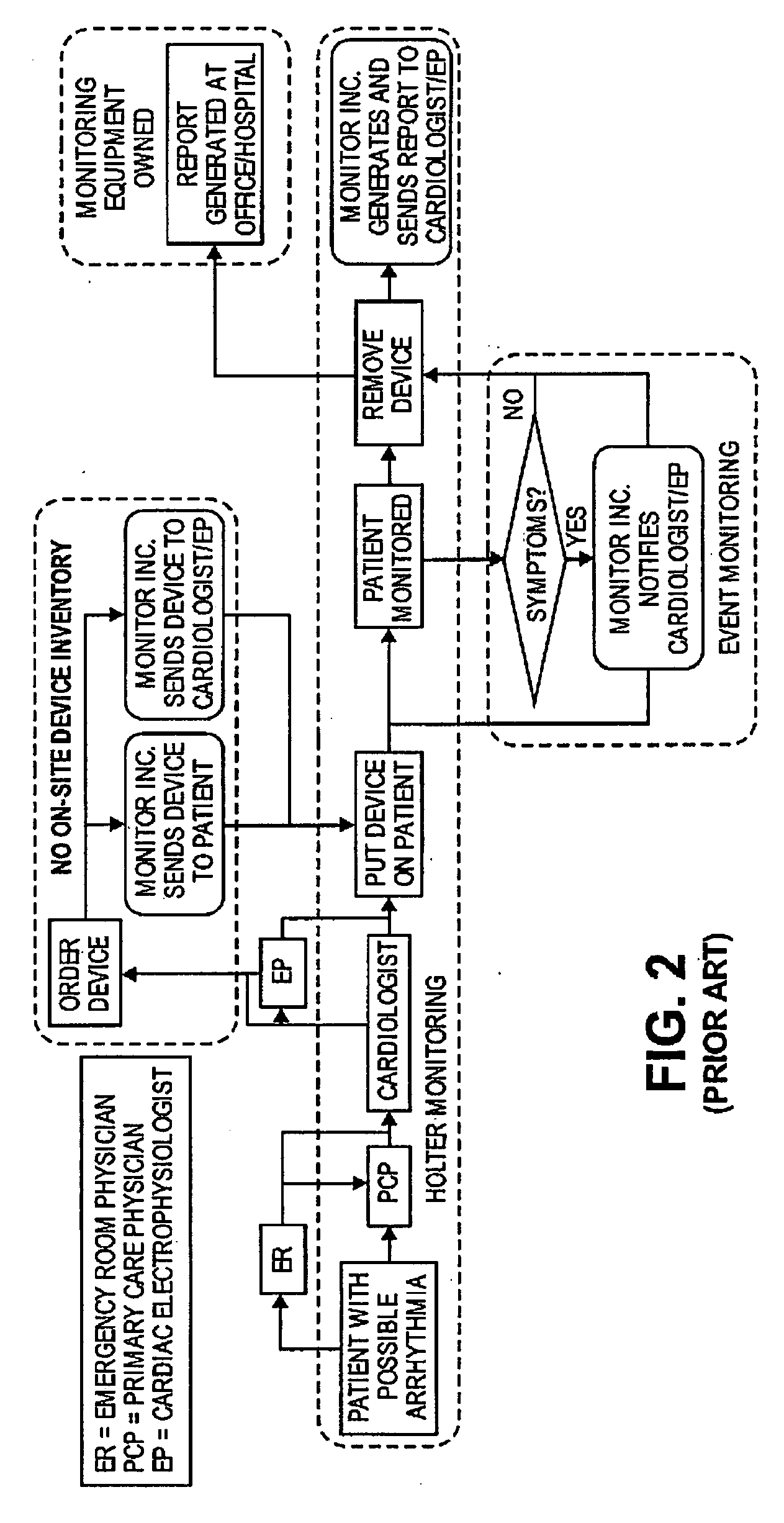Non-invasive cardiac monitor and methods of using continuously recorded cardiac data
a cardiac monitor and continuously recorded technology, applied in the field of non-invasive cardiac monitors, can solve the problems of cumbersome wires, difficult rapid and reliable diagnosis, and electrodes that need daily replacemen
- Summary
- Abstract
- Description
- Claims
- Application Information
AI Technical Summary
Benefits of technology
Problems solved by technology
Method used
Image
Examples
Embodiment Construction
[0038] In the US, over 2.3 million individuals suffer from arrhythmias, with over 700,000 new cases diagnosed annually. Over 80-90% of these arrhythmias occur in individuals over 40 due to the association of arrhythmias with aging and the occurrence of age-related events, such as heart attacks. Additionally, each year over 250,000 people die suddenly in the US due to arrhythmias (“Heart Disease and Stroke Statistics”, from the American Heart Association published in 2005). Given these staggering figures, the diagnosis of arrhythmias is of crucial importance, especially since many effective treatments exist.
[0039] The occurrence of an arrhythmia can cause a range of symptoms from palpitations, dizziness, shortness-of-breath, and chest pain, to loss-of-consciousness and even death. In some individuals, arrhythmias may not lead to perceptible symptoms, even though these individuals may still be at risk for numerous arrhythmia-related complications such as strokes. Since many of the sy...
PUM
 Login to View More
Login to View More Abstract
Description
Claims
Application Information
 Login to View More
Login to View More - R&D
- Intellectual Property
- Life Sciences
- Materials
- Tech Scout
- Unparalleled Data Quality
- Higher Quality Content
- 60% Fewer Hallucinations
Browse by: Latest US Patents, China's latest patents, Technical Efficacy Thesaurus, Application Domain, Technology Topic, Popular Technical Reports.
© 2025 PatSnap. All rights reserved.Legal|Privacy policy|Modern Slavery Act Transparency Statement|Sitemap|About US| Contact US: help@patsnap.com



